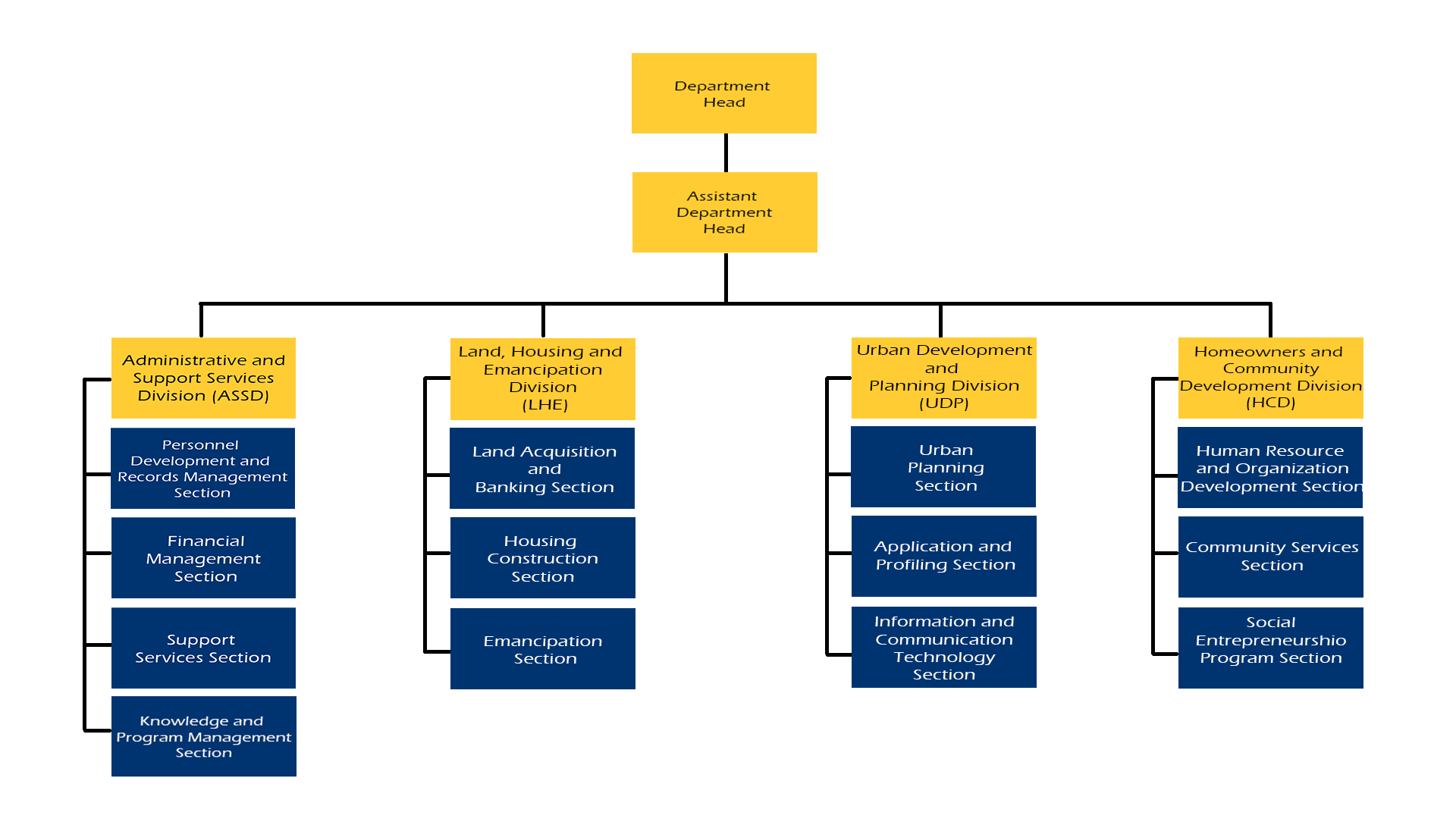Overview of the Department
The creation of the department started with the data coming from the Estate Management Division under the City Planning and Development Office and the Local Housing Board of Cagayan de Oro. With a total number of 34,898 informal settler families which was then translated into the Local Shelter plan. The main recommendation of the LSP was to establish a department that will handle the housing concerns of the city. By 2015, the first Housing Summit was held which produced a 7-point agenda for the city to prioritize housing programs which will address the number of ISF’s stated and the incoming population that will inhabit the city. With such ideas in thought, the City Housing and Urban Development Department was born through City Ordinance No. 13175-2016
Under the present administration’s 8-point agenda, housing has been identified as not only a social development objective, but more dynamically, a driver for economic development, with its goal being: the “Strategic relocation of residents in high-risk areas and informal communities, serving as the catalyst for the development of new growth areas.” True to its intention, the City has set its sights on acquiring new lands for housing development within the two identified growth areas: uptown-west and uptown-east, specifically Lumbia, Pagatpat, and Balubal, not just to spatially decongest the core urban area downtown, but to primarily spur and distribute development.
.png)
Vision
The Vision of the department as the strategic and prime development hub of the south, a city-managed through the good governance, with an empowered citizenry that thrives in a highly competitive economy, and a sustainable environment that nurtures its diversity and multicultural heritage towards a resilient, progressive, and inclusive future.
Mission
1. Provide decent shelter to underprivileged and homeless Kagay-anons whose lives are economically challenged;
2. Strategically provide tenure and empower communities for sustainable development.
3. Provide inclusive resettlement areas; and
4. Transpire stakeholders and communities’ participation for humane, efficient, and transparent participatory governance.
Organizational Chart
